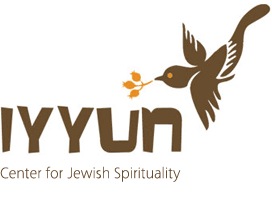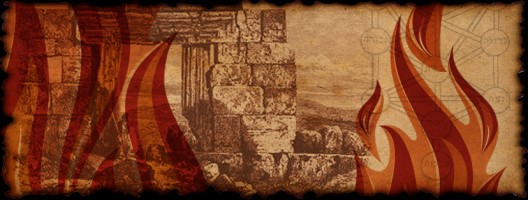Kabbalistically, the Omer days are not merely an immaterial space that bridges Passover with Shavuot. The counting itself is seen as integral to the process of moving from liberation to revelation.
Read more...Yom Kippur night is a unique time for men in that a prayer shawl (talit) is worn during the night service. Although we should make sure to put the talit on before sunset since we are commanded to wear the talit only during the day, when we do so at night, we do not recite the customary blessing. The reasons why the talit is worn at this unusual time are many: for one, during the Maariv service, the Thirteen Divine Attributes of Mercy are recited, and tradition has it that a talit should be worn when reciting them. Additionally, the talit, a white garment, is worn to mimic angelic behavior, and angels are said to “dress” in pure white.
While some people can reach teshuvah by simple inner reflection and introspection, others need a push, something external to impinge on them and inspire them. For some, a talit is worn as a sign of transcendent consciousness, for others the talit is a stark reminder of death and the transient nature of physical existence. Customarily, the dead are buried in a talit and a kittel (a white robe), and so on Yom Kippur these garments are worn to inspire (if needed) a will for teshuvah.
Kabbalisticaly, the covering of the talit shawl represents the light of makif, a surrounding all encompassing force that hovers above the penimi, the inner immediate present dimensions. It is the uniqueness of Yom Kippur where the divine nukvah-receiving force is elevated into higher dimensions, and that is why only on this night can the garment of makif, the talit, be worn.
The custom is to take out the Torah scrolls from the ark for the Kol Nidrei prayer. This is done to inspire the congregants to pray, and to insure that our prayers are linked to the Torah. The chazzan (the one leading the prayers) is flanked at both sides with two people holding Torah scrolls. This is done to mimic a court, a beit din of three, as a court is needed to annul vows. In addition, just as Moshe was flanked by Aharon and Hur, when he prayed for the Israelite victory during the war with Amalek, so too, on fast days, such as Yom Kippur, three people represent the community.
All vows
The prayer called Kol Nidrei (“All Vows”), whose author is unknown, dates back at least to the 9th century, a period of Byzantine persecution, though some say it was composed as early as the 6th century when the King of Spain ordered all the Jews to convert or die.
One might expect that the initiating prayer of Yom Kippur would express the theme of the day – perhaps speak of our soul’s deepest yearning to merge openly with its source or of our commitment to the transcendence of the day. But instead, this prayer speaks of annulling our vows, which suggests a lack of spiritual development, a way of avoiding responsibility.
Scholars have speculated that the Kol Nidrei prayer first gained prominence during the Dark Ages of Medieval Europe. Back then, many Jews were forced to relinquish their Judaism or die, and as a result, many converted, vowing allegiance to another faith. On the eve of Yom Kippur, these poor Jews would secretly gather and whole-heartedly beg God that the vows they made in the previous year would be totally annulled, thus reaffirming their complete devotion to their roots. With such a history, it is obvious why this emotionally charged prayer evokes an intense response from us.
While this may be true, its history cannot be the only reason that Kol Nidrei has such power.
For one, the Talmud states that the person who desires that his or her vows not be binding should declare in the beginning of the year that all future (and as some commentaries say, also past) vows be rendered powerless. Thus, as the year begins we render all vows void, and here is why:
Yom Kippur represents the oneness of time, space and consciousness. As such, it is a day when our essence has real potential to be revealed. It is a day when we have the ability, more than ever, to transcend material limitations and connect with the essence of who we are.
Our essence exists above and beyond all restrictions and confinements. It is a place within that is beyond plurality or fragmentation-a place where we are at one with all reality, with our Divine source. Externalities have no affect on this level of soul; it remains pure and in its perfect state under all circumstances and conditions.
During the course of the year, we live for the most part in a reality of the external. We operate in a physical universe with all its limitations, where we are connected to our lower self. So when it comes to keeping our word, we must. If we promise someone we will do him or her a favor, the honorable thing is to do it, even if we do not feel up to it. To be honest demands that we are mindful of our words, actions and thoughts; whether it is a promise made to our fellows or to God, we must keep our word no matter what.
Yes, we should do as we say, and part of the simple reason we offer this prayer is to remind us that although our words are binding, there is still a misalignment between our minds, hearts and actions, and a discrepancy between one day and the next.
Yom Kippur demands and inspires us to be more. As we begin the holiest of days, traveling deeper within, we annul future vows, saying to ourselves that we no longer need the external pressure of our words to inspire noble behavior. From now on, we plan to live mindful of what we feel deeply. We plan to fully integrate our actions, words and thoughts with our beliefs. Our minds and hearts will be in the same place. This is how we aspire to live in the year to come.
Yom Kippur affords us an amazing ability to tap into the deepest resources of soul, explore and reveal the essence of who we are, and then live accordingly for the entire year to follow.
Finally, since every action below affects a mirror reaction above, we plead with God: “True, we may have led a life full of dubious behavior, and we know that our spiritual alienation from our Source of Life causes a physical condition of exile and hardship. This has happened to us because You have token an oath to respond in kind to our behavior. But now that we are annulling our personal oaths, we ask that You to do the same, and once again allow Your Divine presence to rest among us in Your holy city.”
Building the Divine kingdom
From a more mystical perspective, the annulling of vows fits with the over-arching theme of the High Holidays: the building of the Divine kingdom – binayan hamalchut.
The building of the supernal kingdom awakens a renewed Divine desire to be a king – to rule, nourish and sustain physical existence.
According to kabbalah, the concept of kingdom/kingship-malchut is intricately connected with speech. After all, a king rules through his words, which become his commands.
In the language of Kabbalah, malchut is the “crown” of the lower universe. It is the final, and in some ways, the most important of the Ten Sefirot—the ten Divine spheres or channels with which God created the world and which continue to permeate all reality. Each of these ten channels is like a hologram, reflecting itself as well as the other nine. This means that malchut, in addition to being a sefirah in its own right, is also included in the other nine sefirot – within chochmah (“wisdom”), binah (“understanding”), daat (“knowledge”), chesed (“loving-kindness”), gevurah (“strength”), tiferet (“beauty”), netzach (“victory”), hod (“thanksgiving”), and yesod (“foundation”) — just as each of the other nine is included within malchut.
Since the objective of these Days of Awe is to inspire a renewed “building of a kingdom” within all the Ten Sefirot, we are given ten days — from Rosh Hashanah to Yom Kippur — to do it. On each day, we seek to build malchut within another sefirah.
As a reflection to this truth, we also aspire to build our own malchut, by correcting/rectifying our speech. Every time we promise and say we will or will not do this or that, we create a form of reality through our words. Therefore, when our actions do not match that reality, an emptiness results. Vows uttered but not fulfilled are empty, lacking vessels of fulfillment. And in order to repair this lack, in order to build the necessary vessels, we need to remedy how we speak. We begin by becoming conscious of our words. And now it is clear why there is such an emphasis on vows during the High Holidays.
As we aspire to build malchut above, we correct and put in order our malchut below. A vow is the most powerful vehicle of speech, closely mimicking Divine speech. Creation came into existence through Divine speech-when God said “let there be light,” there was light, and so forth. While some primordial forms of creation emerged through direct speech, and others through more complicated and detailed word combinations and permutations, all in all, everything was – and is – created through Divine speech, which is an expression of malchut.
The creative ability of our own speech remains elusive, detached from practical and tangible reality, except in the case of vows. When we make vows using our speech, we must follow through with our actions.
And so, as we aspire to build malchut above, we do our part below building, correcting and putting in order our own malchut, our own speech, particularly that speech which is deeply associated with actions.








